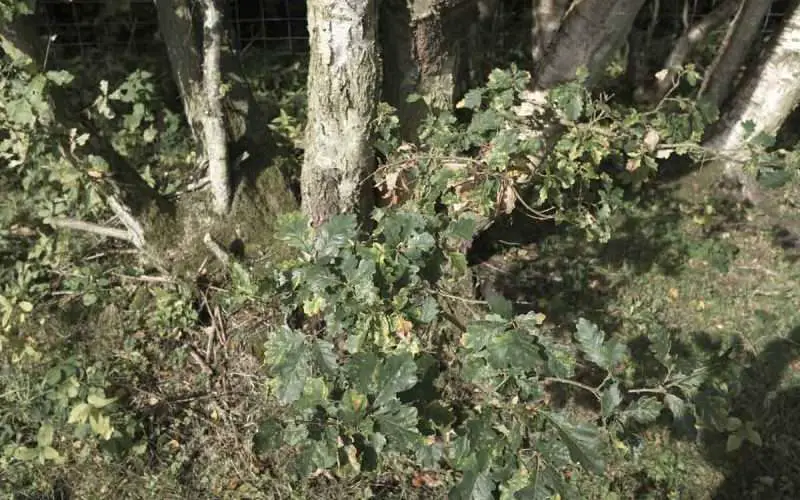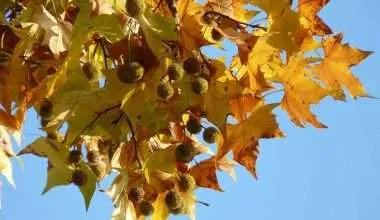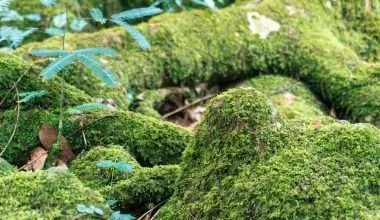Table of Contents Show
The multi-purpose silver oak tree is more than simply a nice sight in your yard. In fact, you may benefit from this tree in several ways.
What are silver oak trees?
Grevillea robusta, sometimes known as silver oak, is a native of Australia’s east coast. It’s a fast-growing evergreen tree that may reach heights of 35 meter with diameters measuring more than 1 meter.
Grevillea robusta thrives in subtropical and dry rainforest habitats with an annual rainfall of more than 1,000 mm. Silver oak trees are also known as silk, silky, and southern silky oak in the United States.
These evergreen trees have several applications other than providing shade. They may be utilized as windbreaks, fuelwood, veneer, musical instruments, cabinets, and for replanting. They also serve as a source of nectar for pollinating birds and insects.
Contrary to what the name suggests, the silver oak tree is not actually a part of the oak tree family. In fact it has no relation to oak trees at all. The Silver oak tree is part of the macadamia nut tree family, called Proteaceae.
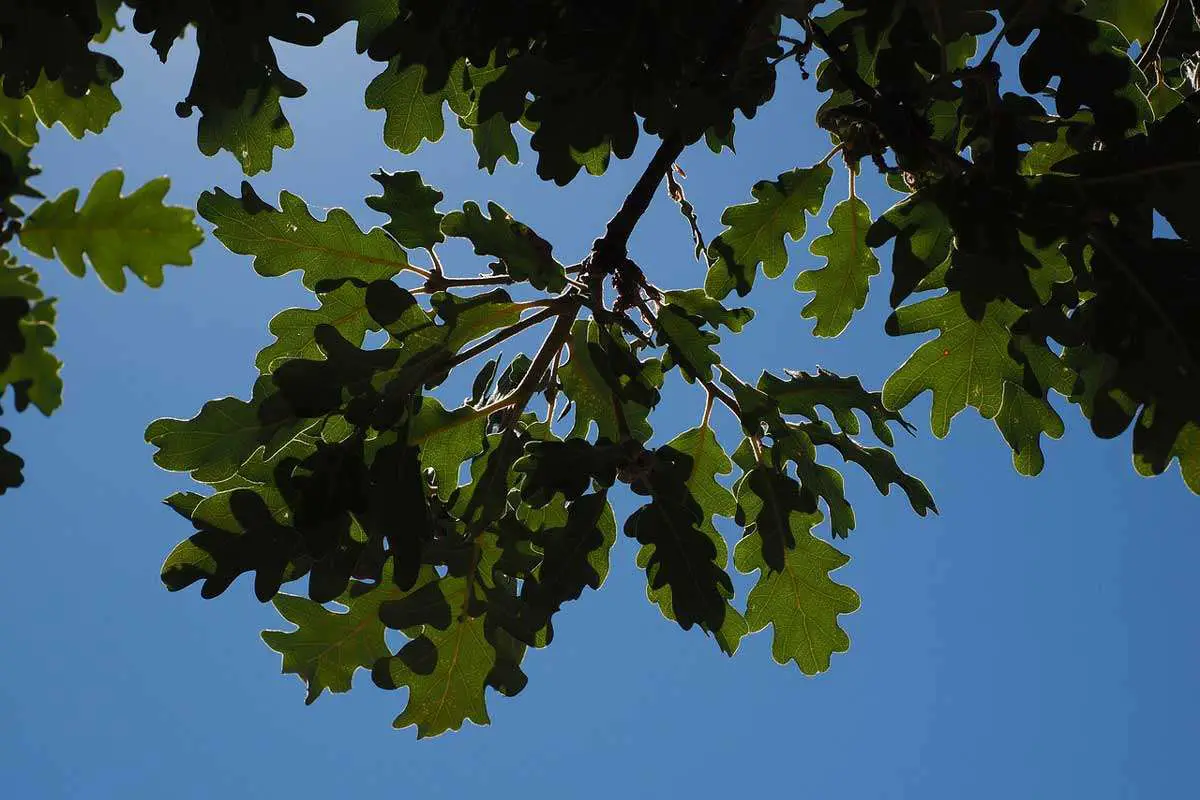
This family of trees hails from the genus Grevillea Robusta. This is a rather large umbrella of trees, shrubs and other plants. The silver oak tree is considered as the largest tree in their entire genus.
While trees from this genus are specifically known to produce nectar for bees and other insects, their fruits and seeds are rarely consumed by any wildlife.
The reason being that fruits and seeds belonging to the grevillea robusta genus usually contain cyanide. Cyanide is a poisonous substance that can kill most living things remarkably fast.
Area and Climate Zones That Host Silver Oak Trees
The Silver Oak trees are quite picky of where they grow. This in turn means that there are very specific areas that meet the requirements to allow these trees to flourish. Within the United States this includes Southern Florida and Texas, as well as the southernmost points of Southern Arizona and Southern California. They can also be found in Hawaii.
Beyond the States, however, these trees are mainly found in Australia, their native homeland. Though specifically speaking even in Australia the Silver Oaks can only be found from the east coast of Queensland down all the way till New South Wales.
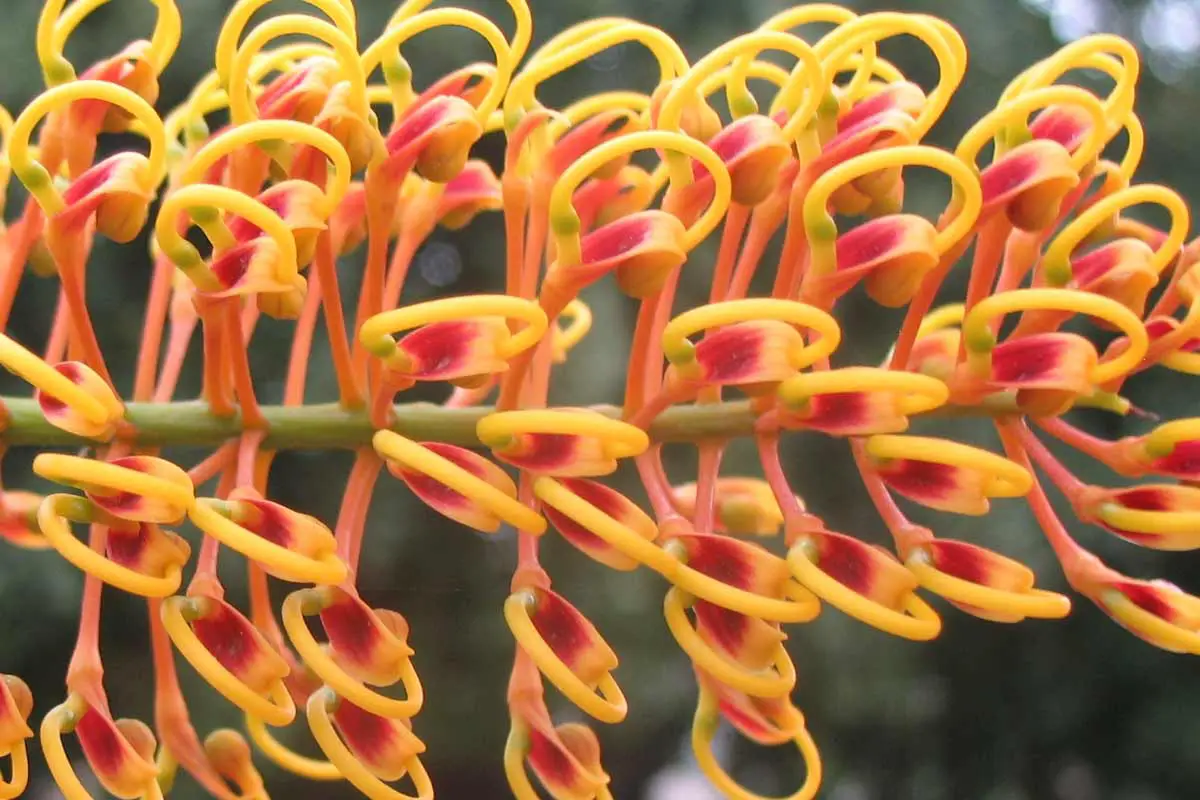
An interesting fact about these trees is that in New South Wales, the Silver Oak tree is so common that they are actually considered weeds. The Silver Oak trees keep popping up almost everywhere in the South Wales region.
While these are the regions that the silver oak trees are naturally found in, they can be grown in any place that fulfills all of their pesky requirements. Considering their native habitat in Australia, it is easy to guess that these trees like warm climates. Though the trees are capable of surviving in temperatures as low as 18 degrees fahrenheit.
Generally the ideal temperatures for growing these trees lie between 50 and 80 degrees fahrenheit. Warmer climates will allow the trees to grow healthy and at a faster pace.
Apart from having the ideal temperature conditions, the silver oak trees also require specific, well drained soil. These trees are unable to grow well in a soggy environment. This is why the soil needs to be well drained and somewhat dry for the trees to grow.
Moreover, it is also best to have slightly acidic soil. This means that the pH value of the soil has to be below 7. Generally anything below 7 is considered acidic. The ideal soil conditions for growing silver oak trees have a pH range of between 5 and 6.
If the pH of the soil or the moisture in soil is not maintained then it can drastically affect the trees growth. While in some cases the tree may just end up being stunted with fewer and pale colored leaves; in other cases the tree may not grow at all if the ideal conditions are not met.
Due to these strict growing conditions, silver oak trees do not grow everywhere. That is the reason that most folks in the States will rarely ever see a Silver Oak tree. It is probably only those living in Hawaii that will be able to find Silver Oak trees on all of the islands.
At full maturity, silver oak trees will reach an average height of 75-100 feet with a single, straight trunk under optimum conditions. They grow quickly, at least 3 feet every year and occasionally even up to 10 feet!
10 Uses of Silver Oak Trees
Having discussed what silver oak trees are and where they may be found, we will move on to some of the many uses of these trees. These trees are quite versatile when it comes to the benefits they have so they are used for a range of different tasks.
1. As Ornamental Trees
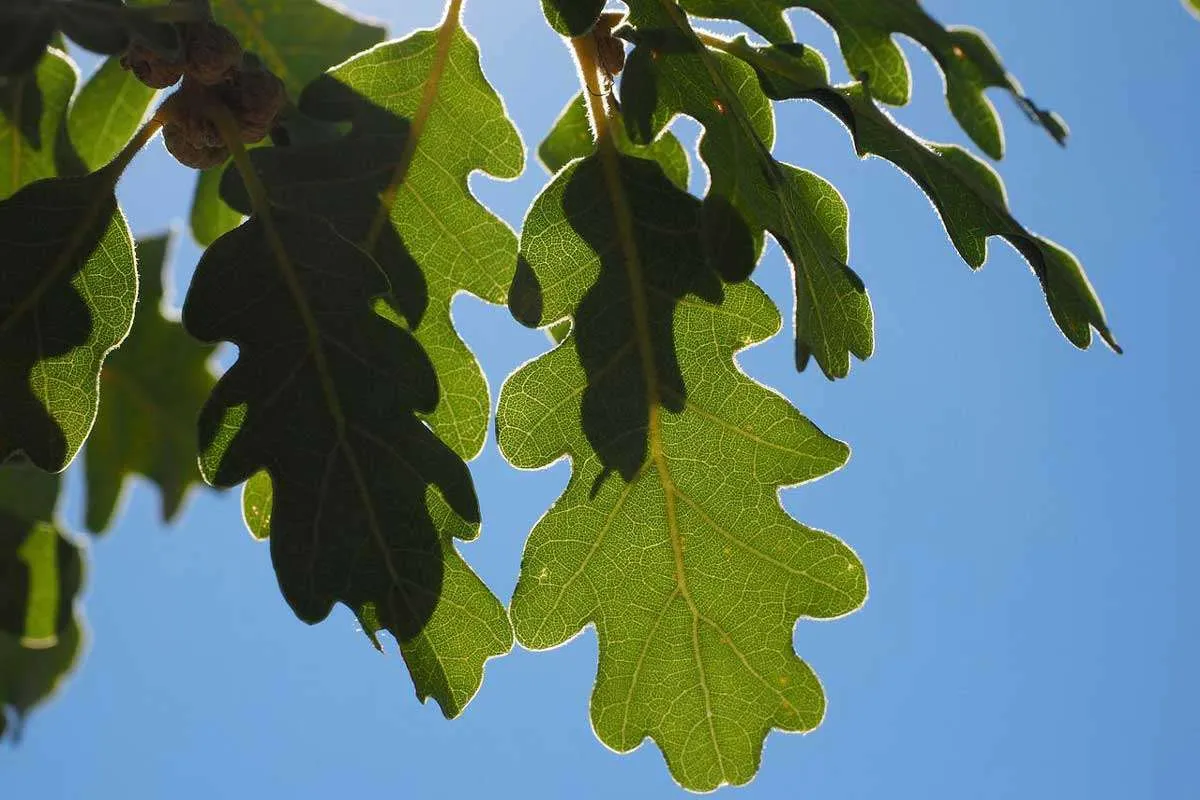
Silver oak trees are huge, falling into the category of ‘skyline’ trees. This also means that they can easily become the center of attention in any yard. Unfortunately, being that huge also indicates that the trees will need a large amount of space to grow.
So if yours is a small backyard, it would be best to not grow the silver oaks in it. That is because these trees need a lot of soil and space to grow.
The silver oaks are evergreen trees, so there is no question of them ever becoming bare in winters. However, these trees shed an inordinately large amount of leaves throughout the year.
Further, the tops of these trees, in particular, can become brittle and are prone to breaking off in high winds. All this makes it inadvisable to grow these trees too near to any small homestead. And that’s especially if fallen leaves and acorns on the landscape are an eyesore for you.
With silver oaks, either make sure that you have a large area of land, and the right soil, to grow a silver oak. Or, put up a petition to have them be used as ornamental street trees in your town.
With their orangish-yellow flowers, and evergreen leaves that are fern-like in their quality, they are an amazing sight year round. Regularly trimmed, these trees will look great on sidewalks while their roots will have a minimal impact on the streets.
2. As Shade

Considering how silver oak trees can reach heights of up to a 100 feet, there is no doubt about it that these trees are massive. The oak leaf cover is quite impressive also. And the beautiful silver oak leaves are an amazing way to provide shade.
The oak tree can provide shade for almost 30 feet all round. This makes it an amazing way to offer shade especially on farms where there are many farm animals around.
Then again, who wouldn’t like some shade on a picnic? And what better way to get it then by sitting under one of these massive silver oaks? However, remember how brittle silver oak branches are and avoid hanging swings from it!
Silver oaks can also be grown on a tea or coffee plantation, to protect them from the effects of the elements. Extreme sunshine, excessive rainfall and cold winds are detrimental to tea and coffee plants, and silver oaks provide necessary shade. This is a common practice in Sri Lanka, India, Hawaii and, the world’s coffee capital, Brazil.
3. As Windbreakers
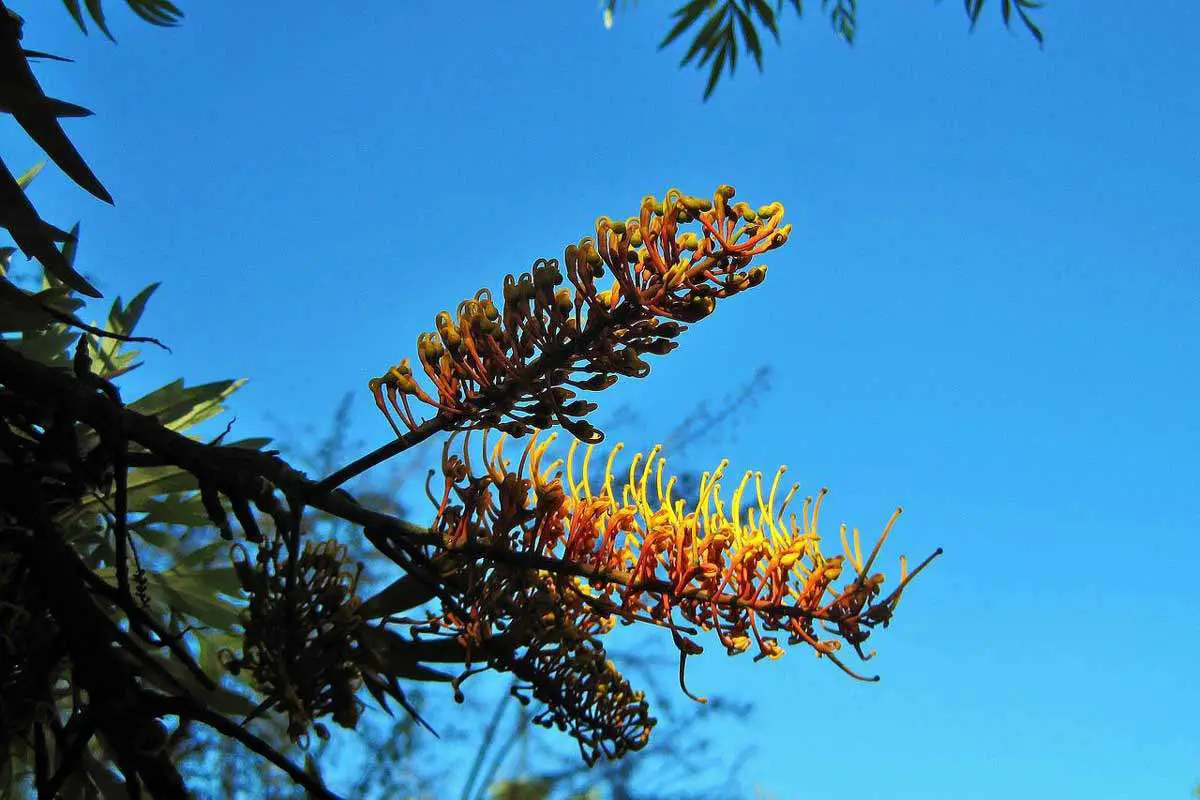
Another excellent application for silver oak trees is as windbreaks. After all, they’re enormous, right? They may as well!
So, just what is a windbreak? Windbreaks are used to break up and decelerate the wind. Slowing the wind results in less erosion, less damage, and better agricultural conditions.
Artificial windbreakers, such as the Royal Shade Windscreen, are available for purchase. This is a fantastic alternative if you require wind protection right away rather than waiting 10 years for a silver oak to grow large enough to give wind protection.
Windbreaks improve the environment for the soil, cattle, and wildlife. Silver oaks are not particularly wind-resistant. Because as the tree ages, the branches become fragile and readily snap.
According to the Natural Resources Conservation Service, silver oak trees play a significant role in controlling Citrus canker in Florida. Citrus cankers are caused by a bacteria infecting citrus trees and generating brown blotches and lesions on the fruit.
Because silver oak trees are not extremely cold resistant, they are mostly found around the southern shore. The bacterium that causes citrus cankers moves in windy rain and deposits itself in the stomata of sensitive citrus plants.
When silver oaks were used, the number of lesions discovered on sensitive trees was decreased, and the disease transmission was limited to a few plants rather than a whole nursery.
4. As a Source of Nectar
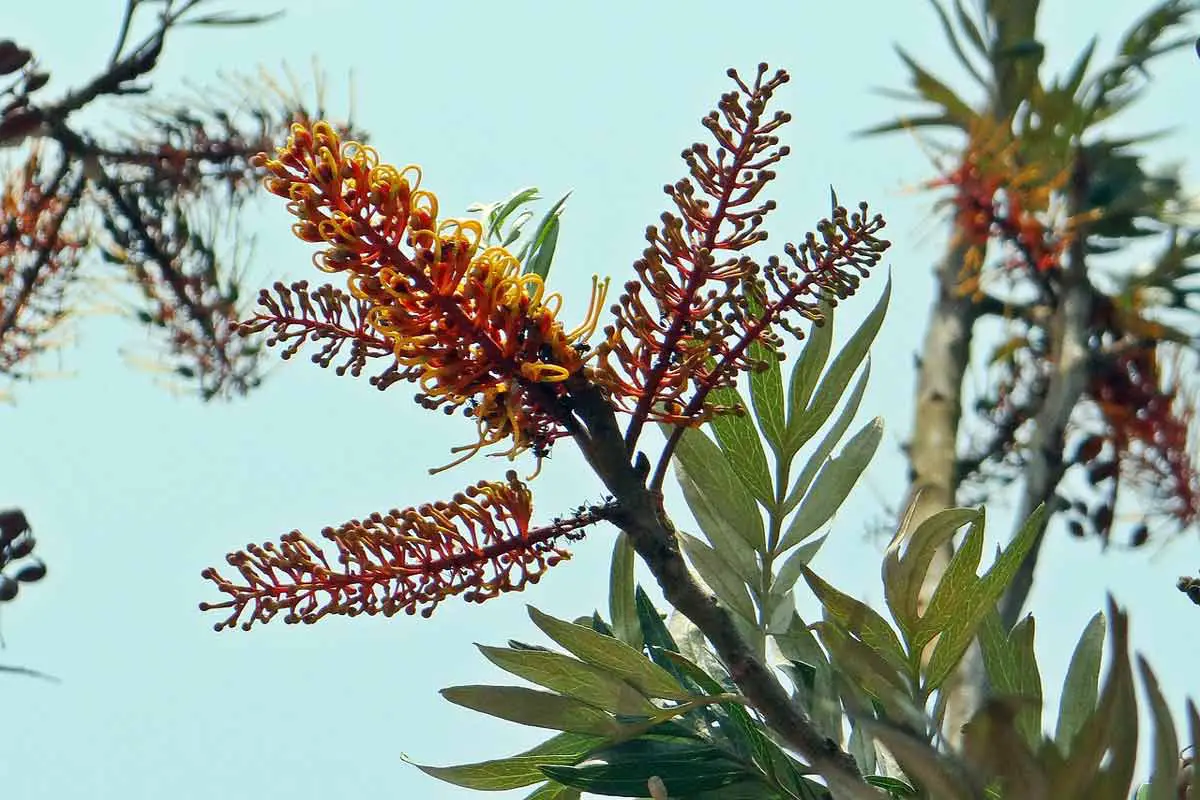
Trees not only give oxygen and shade for people, but they also provide food and shelter for a variety of creatures. Trees with their fallen fruits and nuts assist squirrels, birds, beetles, deer, raccoons, and a variety of other species.
The silver oak offers a unique type of reward to passing wildlife: nectar! According to a research published in Austral Ecology, honeybees and ants benefit the most from this characteristic, although birds also participate.
During the study, they discovered that birds were better pollinators of silver oaks than bees or ants, but that bees and ants frequently hogged the nectar, making cross-pollination significantly less common than it should have been.
Consider hanging a bee habitat from a nearby tree to offer the birds a better opportunity at the nectar. Bees will flock to this arrangement, allowing the birds some breathing room.
In India, silver oak trees are essential honey trees because their nectar is processed and sold as honey.
5. As a Source of Firewood
Nothing beats sitting around a fire on a beautiful summer night, watching the flames rise and fall into the darkness.
Are you ready to light a fire? Silver oak wood makes excellent fuel!
Silver oak trees are simple to grow in warm regions since they do not compete with other plants and trees. As a result, silver oaks are frequently grown in plantations and harvested for specialized uses. For example, firewood.
Timber is another product made from silver oaks. These trees grow quickly and straightly, making them ideal for the wood sector.
6. As Veneer
You are not alone among individuals who are inexperienced with woodworking. The term “veneer” is certainly familiar but poorly defined in the typical person’s mind.
A wood product’s veneer is its “face.” It may transform a TV stand into solid wood or a chest into dark cherry. Most wood goods are made of particleboards but covered with a wooden face, known as the veneer.
Because many individuals loathe the look of particle board in their homes, veneer is a valuable product in the wood business. Silver oaks have a distinct look known as lacewood. It has vertical striations and varies from silvery gray to brown.
Silver oak veneer has produced allergy responses in certain people who are allergic to the wood in recent years.
7. For making doors, windows and other furniture
Silver oak trees are not only used to make the faces of wood items but they are also utilized to create things! The wood of silver oaks mimics that of a genuine oak tree, making it an appealing wood in the industry.
Remember how we stated that silver oak trees grow quickly? Due to this feature, the silver oak is one of the preferable trees to utilize for wood products because of its increased sustainability.
Silver oaks may reach a height of 10 feet in just two years!
Cabinets, doors, windows, and furnishings are all made from silver oak trees. The silver oak tree wood is resistant to decay. This property of the wood makes it ideal for making things exposed to the elements of decay, such as doors, windows, and even cabinets.
8. For manufacturing musical instruments
Because silver oak trees mimic oak tree wood, they are frequently used to create exquisite musical instruments.
Silver oaks are classified as “soft” hardwoods. The wood is easy to work with and does not splinter or shatter, making it an excellent choice for instruments. Softwood trees are typically utilized for musical instruments, however hardwood species are employed on occasion.
The common misconception regarding hardwoods and softwoods is that hardwood is hard and softwood is soft. While this is true for many hardwood and softwood trees, it is not true for all of them.
According to experts, hardwoods were the toughest trees to whittle and cut back in the days of two-man saws and whittling wood into implements. Softwoods are trees that are easy to deal with and cut.
When scientists arrived with their calipers and notepads, they were not certain that this was the correct way to classify hardwood and softwood. Instead, they discovered that the ‘hardwood’ trees were all deciduous trees that lose their leaves in the fall. The softwoods were all evergreen.
Finally, they discovered a hardwood and softwood labeling system!… right?
As they proceeded west and south, the confusion grew as some fall-shedders were discovered to be softwoods and some evergreens were discovered to be hardwoods.
They now utilize a procedure known as the Janka-ball hardness test to distinguish between hardwoods and softwoods. The test, which involves shooting a hard metal ball into the wood, is as weird as it sounds.
9. For Reforestation Purposes
Reforestation is an extremely important task that we must all aid in as humans. With the growing concerns of global warming and climate change, growing plants and especially reclaiming dying forests is essential.
Reforestation is probably the fastest way to combat climate change. To make it as efficient as we possibly can, it is preferable to plant fast growing trees. The Silver Oak being one of the fastest growing species there is, is a very popular choice.
Therefore, the increased growth rate of these trees is essentially what helps us to regrow forests quickly. This in turn helps slow down climate change. Experts believe that with sufficient efforts we may even be able to stop the climate catastrophe from happening altogether.
10. As Nesting Places for Local Birds
If you like bird and wildlife watching, here’s one great use for you! Trees, by providing shade and shelter and food and homes to numerous wildlife, are an integral part of any ecosystem.
In this case, the silver oak provides sustenance and shelter to numerous wildlife such as:
- Native birds use leaf litter as well as twigs to make their nests. Being evergreen, the silver oak tree can provide the right amounts of protection and shade for nesting birds.
- Birds also gain sustenance, being attracted to the brightly colored flowers and the nectar that they provide. So, this tree is a winner as far as local birds are concerned!
- Again, the bright, orange-yellow flowers that bloom in spring are a nectar haven for insects, especially pollinating ones. Bees and ants are particularly drawn to the silver oak leaf and flowers.
- Fruits such as acorns in this case, can be very appealing to some animals such as racoons and squirrels. The silver oak not only provides these animals with acorns for food, but also gives them shelter. Racoons and squirrels nest in hollow cavities in the silver oak.
